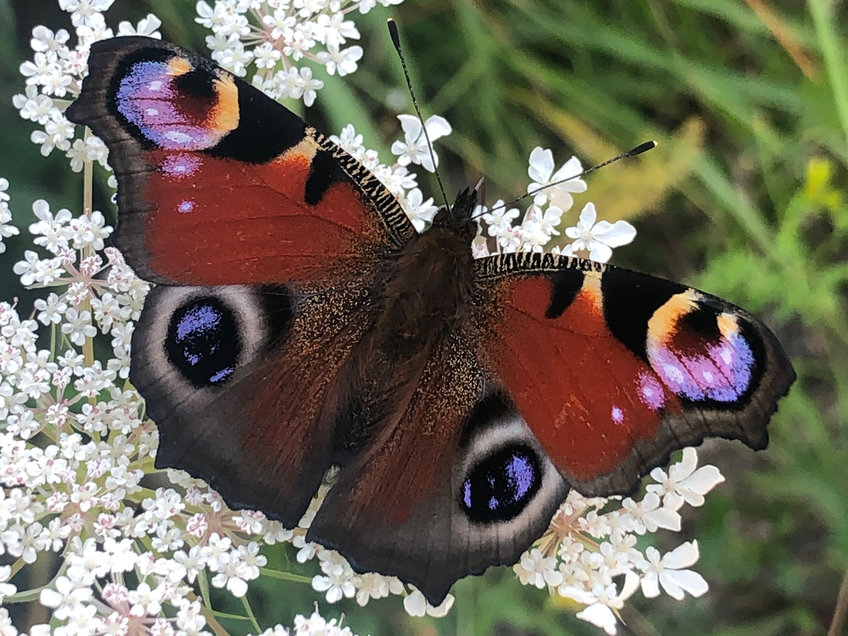The Mona Lisa effect: Eyespots deter predators that approach from different directions
Experiments with chicken chicks and artificial peacock butterflies prove that predators are intimidated by eyespots
The eyespots of many prey animals deter predators from attacking, like those of the peacock butterfly. In a new study, researchers from the Max Planck Institute for Chemical Ecology and the University of Newcastle show that the configuration of eyespots have an impact on the prey’s survival. The deterrent potential of eyespots is larger when they appear to look directly at a predatory chick. The most effective deterrent are concentric circles that subjectively appear to maintain eye contact regardless of the perspective from which they are approached.

Visitors to an art gallery may be familiar with this effect: they feel watched or even followed by the portrayed person’s eyes everywhere in the room. This is called the "Mona Lisa effect" after the best-known portrait with the effect described, and it is created because the painter precisely centered the pupils of the portrayed person.
Some animals, including many fish and butterflies, have paired circular spots on their bodies that closely resemble eyes. "Nature seems to utilize the Mona Lisa effect as well. But in the animal kingdom, it can be a matter of life and death," says Hannah Rowland from the Max Planck Institute for Chemical Ecology in Jena, Germany.
To test the Mona Lisa effect and rule out a general deterrent effect of conspicuous patterns, Hannah Rowland and her colleague John Skelhorn from Newcastle University developed a behavioral experiment with newly hatched domestic chicks that they trained to attack artificial moths for a mealworm reward. When the chicks had learned how to attack the prey, they were presented with one of three different artificial moths: one with eyes whose middle circles looked to the left, one with “eyes” that looked to the right, and one with perfectly concentric circles; thus, they appeared to gaze straight forward or to one of the two sides. Then the researchers built mini catwalks (or rather chickwalks) that either led straight to the food or approached their prey from the side.
Chicks perceive eyespots as eyes

The results of the behavioral experiments were unambiguous: "The chicks approached more cautiously from the left when the eyespots appeared to look to the left. Chicks approaching from the right showed similar caution when the eyespots were shifted to the right. However, when the chicks approached the artificial eyes from the opposite direction, they attacked the artificial moth quickly and ate the mealworm. Chicks approached moths with concentric circular eyes from all directions only with great caution," John Skelhorn summarizes the observations.
The behavioral observations confirm the prediction that the chicks perceive the artificial eyespots as eyes. "Eyespots with concentric circles seem to stare at potential predators, like our chicks, from many directions, just like portraits that seem to maintain eye contact no matter where you are in the room. This probably also explains why, in nature, eyespots have evolved independently in different animals to successfully deter enemies," believes Hannah Rowland.













